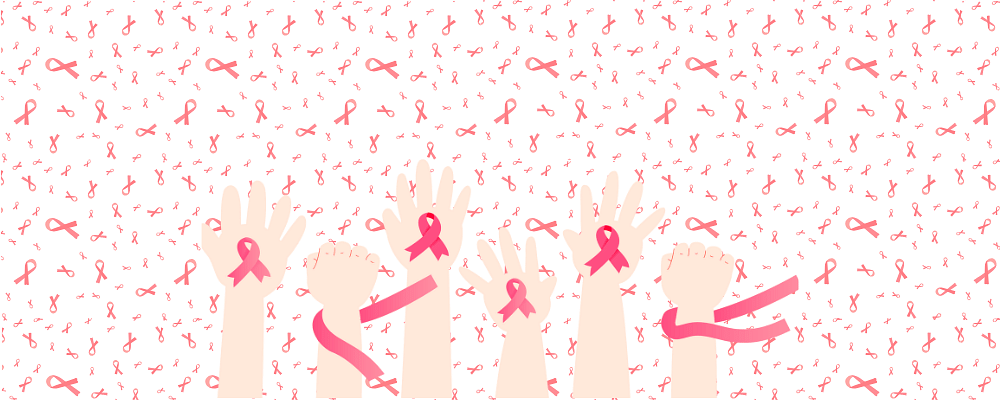Breast Cancer Stages: What Does Each Stage Mean for Treatment Options?

Breast cancer is a complex disease, and its progression is often described in stages. These stages help doctors understand how far it has spread and determine the best course of treatment. Knowing the stage of your breast cancer is essential because it helps decide the best treatment.
What are the Stages of Breast Cancer?
There are five main stages of breast cancer, from Stage 0 to Stage 4. Here's what each stage means:
Stage 0: Pre-Breast Cancer (Ductal Carcinoma in Situ)
Stage 0 breast cancer, also known as ductal carcinoma in situ (DCIS), is considered non-invasive. Cancer cells are only in the milk ducts and haven't spread to other parts of the breast. Although it’s not life-threatening, it does increase the risk of developing invasive breast cancer later. Treatment for stage 0 usually involves:
- Lumpectomy (removal of the tumor) followed by radiation therapy
- Sometimes, a mastectomy (removal of the entire breast) is recommended if there's a high risk of recurrence.
Key takeaway: Early detection at this stage offers a high survival rate, and treatment can help prevent the cancer from becoming invasive. According to the National Cancer Institute, the 5-year survival rate for DCIS is nearly 100%."
Stage 1: Early-Stage Breast Cancer
In stage 1, cancer has started to invade nearby breast tissue but is still small and localized. It is divided into:
•Stage 1A: The tumor is 2 cm or smaller and has not spread to lymph nodes or other part of the body.
•Stage 1B: Cancer has spread to nearby lymph nodes, but the tumor is very small or even undetectable.
Treatment options include:
- Surgery (lumpectomy or mastectomy)
- Radiation therapy to eliminate any remaining cancer cells
- Hormone therapy if the cancer is hormone-receptor positive
- Chemotherapy is usually not necessary but may be recommended for more aggressive forms of cancer.
Survival rate: According to SEER data, the 5-year survival rate for stage 1 breast cancer is approximately 99%, making early detection key to successful treatment.
Stage 2: Cancer Starts to Spread Locally
Stage 2 breast cancer indicates that the tumor is larger and may have spread to nearby lymph nodes. It's divided into:
•Stage 2A: The tumor is either smaller than 2 cm but has spread to 1-3 lymph nodes, or it’s larger than 2 cm but hasn't spread to lymph nodes.
•Stage 2B: The tumor is between 2-5 cm and has spread to 1-3 lymph nodes, or it's larger than 5 cm but hasn't spread to any lymph nodes.
Treatment typically involves:
- Surgery (lumpectomy or mastectomy)
- Chemotherapy to shrink the tumor before or after surgery
- Radiation therapy
- Hormonal or targeted therapy, depending on the cancer's specific characteristics
Survival rate: The stage 2 breast cancer survival rate is also high, but treatment is more aggressive than in earlier stages.
Stage 3: Locally Advanced Breast Cancer
Stage 3 breast cancer is more serious as it indicates the tumor has spread to multiple lymph nodes or nearby tissues, such as the chest wall or skin. It is divided into:
•Stage 3A: The tumor may be larger than 5 cm and has spread to several lymph nodes.
•Stage 3B: The tumor has spread to the chest wall or skin, causing swelling or ulcers. This is where inflammatory breast cancer comes into play.
•Stage 3C: The cancer has spread to 10 or more lymph nodes or to nodes near the collarbone.
At this stage, a combination of treatments is needed:
- Neoadjuvant chemotherapy (to shrink the tumor before surgery)
- Surgery (lumpectomy or mastectomy)
- Radiation therapy to target any remaining cancer cells
- Targeted therapies like HER2 inhibitors (if applicable)
Survival rate: While the stage 3 breast cancer survival rate is lower than earlier stages, aggressive treatment can still lead to successful outcomes.
Stage 3 Breast Cancer Survival Rate:
The 5-year survival rate for stage 3 breast cancer varies between 72% and 85%, depending on age and other factors. Early and aggressive treatment is crucial at this stage.
Stage 4: Metastatic Breast Cancer
In stage 4 breast cancer, also called metastatic breast cancer, the cancer has spread beyond the breast and nearby lymph nodes to other parts of the body, such as the liver, lungs, bones, or brain. This stage is considered the most advanced.
Treatment focuses on managing and slowing the cancer's spread, rather than curing it. Options include:
- Chemotherapy to slow down the growth of cancer cells
- Hormone therapy for hormone-receptor-positive cancers
- Targeted therapy for specific genetic mutations or protein markers
- Immunotherapy for certain types of breast cancer
- Palliative care to manage pain and other symptoms
Survival rate: The stage 4 breast cancer survival rate varies, but recent advancements in treatment have improved life expectancy. Many women live with stage 4 breast cancer for several years, thanks to newer therapies.
Stage 4 Breast Cancer Survival Rate:
Survival rates for stage 4 breast cancer have been improving, with the average 5-year survival rate around 22%. However, new treatments are offering hope for longer-term survival.
Pictures of Inflammatory Breast Cancer in Early Stages
Inflammatory breast cancer (IBC) is a rare but aggressive form of breast cancer that often appears as swelling and redness of the breast, rather than a distinct lump. This type of cancer progresses quickly, and early detection is crucial for better outcomes.
Pictures of inflammatory breast cancer in its early stages show redness, swelling, and a texture similar to the peel of an orange. If you notice these symptoms, it’s essential to seek medical attention immediately.
Conclusion: Understanding Breast Cancer Stages Helps in Tailoring Treatment
Knowing the stages of breast cancer is essential for understanding the severity of the disease and the best possible treatment options. From stage 0 to stage 4, each stage comes with different treatment strategies and survival rates. Early detection through routine screening, like mammograms, can significantly improve outcomes, especially for stage 1 and stage 2 breast cancers.
By focusing on early detection and understanding the different stages of breast cancer, patients can make informed decisions and explore the most effective treatments for their condition.
Remember, this blog is for informational purposes only and should not be considered a substitute for professional medical advice. Always consult your healthcare provider before making any changes to your treatment.


